Understanding the factors impacting Tomato fruit development is crucial in troubleshooting Tomato plant fruiting problems. Tomatoes are fascinating plants that go through a specific reproductive cycle to produce fruit. Understanding the Tomato plant flowers but not setting fruit is important to grasp this cycle. The Tomato plant’s reproductive cycle begins with the emergence of small yellow flowers. These flowers contain male and female parts, making them self-pollinating.
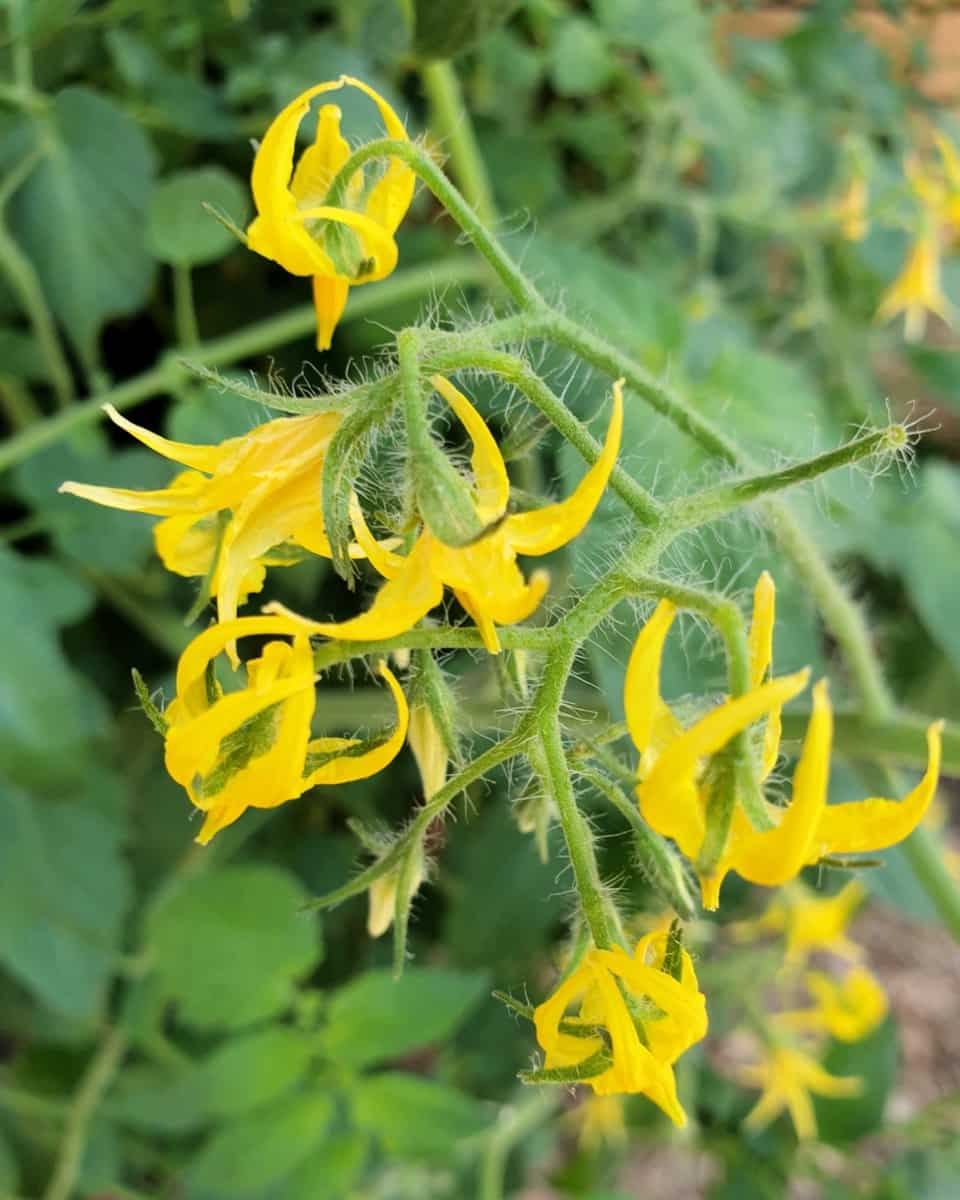
However, they still require external factors for successful pollination. If you’re frustrated with Tomato plant flowers but no fruit, don’t worry. You may try several tips and tricks for increasing the Tomato plant’s fruit production. One of the most frustrating things for gardeners is when Tomato plants have plenty of flowers but no fruit. However, there are several ways to encourage fruiting in your Tomato plants and increase your harvest.
Another common issue that Tomato growers may encounter is the frustrating occurrence of Tomato flowers falling off without setting fruit. This phenomenon, blossom drop, can be disheartening for gardeners eagerly anticipating a bountiful harvest. Fortunately, there are several methods to improve Tomato plant fruit yield.
Factors Affecting Tomato Fruit Set
When growing Tomatoes, one of the most common questions every gardener face is why my Tomato plants have flowers but no fruit. Several factors contribute to this problem, and understanding them can help you troubleshoot and improve the Tomato fruit set in your garden. Lack of pollination is a common cause of Tomato plant flowers but no fruit. Tomatoes use bees and other insects to transfer pollen from the male to the female part, where fertilization occurs. Extreme temperatures can also impact Tomato fruit production.
Nutrient deficiencies and imbalances in Tomato plants can also affect their fruit production ability. Lack of essential nutrients like phosphorus, potassium, or calcium can hinder flowering and fruit development. Hormonal imbalances may lead to flower drops in Tomato plants too. Too much nitrogen fertilizer encourages excessive vegetative growth at the expense of flowers forming fruits – adjust your fertilizer ratio accordingly.
Pests such as aphids, whiteflies, or spider mites can damage blossoms or transmit diseases that prevent proper fruit development. Regular monitoring and appropriate pest control measures will help mitigate this issue. Improper pruning and training techniques for Tomato plants may also interfere with optimal fruit production. Genetic factors also play a key role in determining how well Tomato plants set fruit.
Lack of Pollination: A Common Cause for Tomato Plant Flowers but No Fruit
Pollination plays a crucial role in the fruiting process of Tomato plants. Those beautiful flowers that adorn your Tomato plant may never turn into juicy fruits without proper pollination. Several factors affect pollination and result in a poor fruit set. Pollination is a crucial step in the reproductive cycle of Tomato plants, as it enables the transfer of pollen from the male part (stamen) to the female part (pistil) of a flower.
Tomato Plant Flower Pollination Issues? Tomato plant flower pollination plays a crucial role in the overall success of growing healthy and abundant Tomato plants. When flowers are not properly pollinated, it can result in a disappointing fruit set and reduced yield. How to Increase Flowering in Tomatoes? Make sure your Tomato plants are getting enough sunlight. Tomatoes thrive in full sun, so ensure they have at least six to eight hours of direct sunlight each day. Seeing your Tomato plants big but no tomatoes can be disheartening.
In case you missed it: Hydroponic Tomato Problems: How to Fix, Treatment, and Solutions
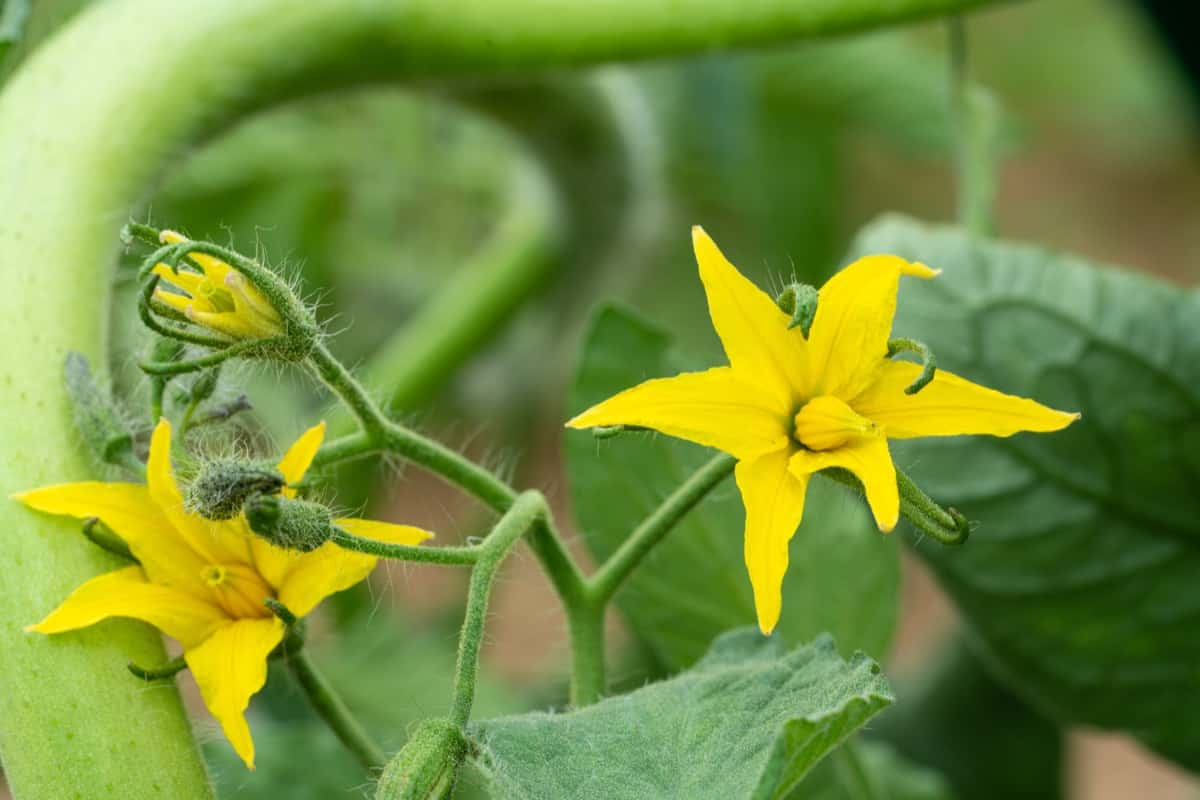
There could be several reasons for this phenomenon. One possibility is inadequate pollination. Tomatoes require proper pollination for fruits to develop, and if there aren’t enough bees or other pollinators around, you may end up with empty flowers instead of fruits. How to Tell if Tomato Flower is Pollinated? One of the key factors in determining if a Tomato flower has been successfully pollinated is observing changes in the flower itself. After successful pollination, you may notice that the petals on the flower begin to wilt and fall off.
This natural process indicates fertilization and signals the beginning stages of fruit development. How Do I Get My Tomatoes to Set Fruit? Encourage pollination and increase fruit production in your Tomato plants, you can try various methods. One option is manually pollinating the flowers by gently shaking them or using a small brush to transfer pollen between blooms. Addressing the lack of pollination can greatly enhance your chances of enjoying a bountiful harvest from your Tomato plants.
Extreme Temperatures Impacting Tomato Fruit Production
Extremely high or low temperatures can significantly impact Tomato fruit production. When the temperature rises above 32°C, the pollen becomes less viable, so pollination may not occur effectively. As a result, even if your Tomato plants are flowering abundantly, you might notice a reduced fruit set. On the other hand, temperatures below 13°C can negatively affect fertilization and lead to poor fruit development. Cold weather slows down the activity of bees and other pollinators, making it difficult for them to transfer pollen between flowers.
High temperatures also increase water evaporation from plant leaves and soil, causing moisture stress in Tomato plants. This can result in blossom end rot – a condition where fruits develop blackened areas at their bottoms. To mitigate these temperature-related issues, consider providing shade for your Tomato plants during scorching summer days using shade cloth or strategically placing them under taller crops that provide natural shade.
In cooler climates or during unexpected cold snaps, protect your Tomatoes with row covers or cloches to maintain warmer conditions around them. Temperature fluctuations are a common cause in how to fix blossom drop on tomatoes. Tomatoes thrive in warm weather, so if temperatures swing too high or too low, it can cause the flowers to drop. High humidity levels can also contribute to blossom drop as it hampers proper pollination.
Nutrient Deficiencies and Imbalances in Tomato Plants
Have you ever eagerly awaited the sight of plump, juicy Tomatoes growing on your Tomato plants, only to be disappointed by a lack of fruit? Many gardeners face common problems with Tomato plant fruit set that can hinder their harvest. Nutrient deficiencies and imbalances can significantly impact the fruiting ability of Tomato plants. These plants require a balanced supply of essential nutrients to produce healthy and abundant fruits.
When these nutrients are lacking or out of balance, it can result in flowers but no fruit. One common nutrient deficiency is nitrogen, which is vital for plant growth and development. Without enough nitrogen, Tomato plants may produce lots of foliage but few flowers or fruits. A lack of phosphorus can also hinder fruit set, as this nutrient plays a crucial role in energy transfer within the plant.
In case you missed it: How to Grow Tomatoes in Grow Bags: Planting from Seed, Growing, and Care
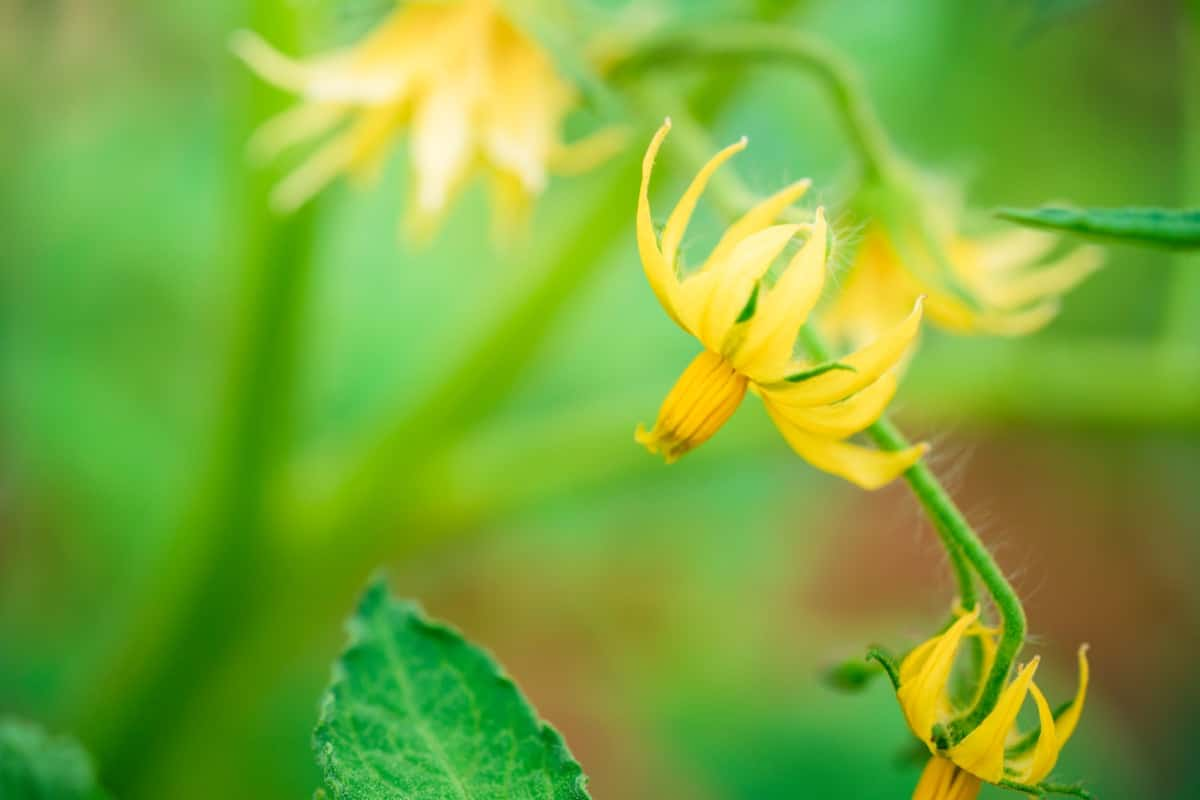
Another important nutrient for Tomato fruit production is potassium. Potassium deficiency can lead to poor flower formation and reduced fruit size. Additionally, calcium deficiencies can cause blossom end rot, where the bottoms of Tomatoes turn black and rot. Regular soil testing can help identify any specific nutrient deficiencies so that you can adjust your fertilization accordingly. In addition to nutrient deficiencies, an imbalance in pH levels can also affect Tomato plant health and productivity.
How do you fertilize Tomato flowers? Fertilizing Tomato flowers is an essential step in promoting healthy fruit development. When it comes to fertilization, timing and technique are crucial. Remember to follow manufacturer instructions when using any fertilizer, as over-application can lead to nutrient imbalances or burn damage on your plants.
Hormonal Imbalances and Flower Drop in Tomato Plants
Like humans, plants also have hormones regulating their growth and development. One hormone, auxin, is crucial in promoting fruit set. An imbalance of auxin or other hormones in Tomato plants can disrupt the normal reproductive process and cause flowers to drop prematurely. This can be frustrating for gardeners who eagerly await the arrival of juicy Tomatoes.
Extreme temperatures or drought conditions can disrupt hormone production and distribution within the plant. Additionally, nutrient deficiencies or imbalances can affect hormone levels and lead to flower drop. To help prevent hormonal imbalances and promote fruit set, providing your Tomato plants with optimal growing conditions is important. Maintain consistent moisture levels by watering regularly and mulching around the base of the plants.
Ensure they receive adequate sunlight for photosynthesis and consider using organic fertilizers to provide essential nutrients. In addition, pruning practices should be done carefully, as excessive pruning can disrupt hormone balance too. Avoid overfertilizing, as this may lead to excessive vegetative growth at the expense of flowering. By understanding how hormonal imbalances impact flower drop in Tomato plants, you’ll be better equipped to address these issues proactively and increase your chances of a bountiful harvest.
Pests and Diseases That Can Prevent Tomato Fruit Development
Pests and diseases can seriously threaten the development of Tomato fruits. One common pest that affects Tomato plants is the Tomato hornworm. These large green caterpillars feed on the foliage, causing significant damage to the plant. Another notorious pest is aphids, tiny insects that suck sap from the leaves and stems, leading to stunted growth and reduced fruit production. Diseases such as early and late blight can also hinder Tomato fruit development.
Early blight causes dark leaf lesions, eventually spreading to the stems and fruit. Late blight, however, results in water-soaked spots on the leaves that quickly turn brown and destroy entire plants. Fungal infections like powdery mildew can affect Tomatoes too. This disease appears as a white powdery coating on leaves, inhibiting photosynthesis and reducing plant vigor. Using organic insecticides or introducing natural predators can help control pest populations without harming beneficial insects.
In case you missed it: 14 Common Problems with Cherry Tomato Plants: Prevention, Treatment, and Solutions

Improper Pruning and Training Techniques for Tomato Plants
Pruning and training Tomato plants are crucial to their overall health and productivity. However, if done incorrectly, it can result in a lack of fruit production. One common mistake is excessive pruning, which can remove too many leaves necessary for photosynthesis. Without enough foliage, the plant may not have enough energy to produce fruits.
Another issue is improper pruning timing. Pruning should be done early in the season when the plant is still small to encourage strong growth and prevent overcrowding. Waiting too long to prune can lead to tangled branches and reduced airflow, increasing the risk of diseases. Overzealous training techniques such as excessive tying or bending of branches can also hinder fruit set. Applying too much pressure on delicate stems may cause damage or breakage, preventing proper nutrient distribution throughout the plant.
Additionally, incorrect removal of suckers – secondary shoots that grow between the leaf stems – can impact fruit development. While removing some suckers promotes air circulation and prevents overcrowding, removing all of them may limit the number of potential flower clusters. Be mindful of timing – prune early on while being cautious not to remove too much. Use gentle ties or supports when training branches. Practice selective sucker removal rather than complete elimination.
Genetic Factors Influencing Tomato Plant Fruit Set
Different varieties of Tomatoes have unique genetic traits that can affect their ability to produce fruits. Some varieties are specifically bred for high fruit production, while others may be more suited for their disease resistance or flavor. One important genetic factor is the presence of self-pollinating or indeterminate genes. Self-pollinating Tomato varieties can set fruit without external pollination, making them less reliant on insects or wind.
On the other hand, indeterminate varieties continue producing flowers and setting fruits throughout the growing season, resulting in a continuous harvest. Another genetic consideration is the presence of certain enzymes that influence flower development and hormone regulation within the plant. These enzymes can impact how well flowers transition into mature fruits.
Varieties with a higher concentration of these enzymes tend to have better fruit set and development. Additionally, some Tomato plants may carry genes that make them more susceptible to environmental stressors such as extreme temperatures or drought conditions. These genetic factors can reduce fruit production when faced with unfavorable growing conditions.
In case you missed it: Expert Tips to Grow the Tastiest Tomatoes: DIY Guide
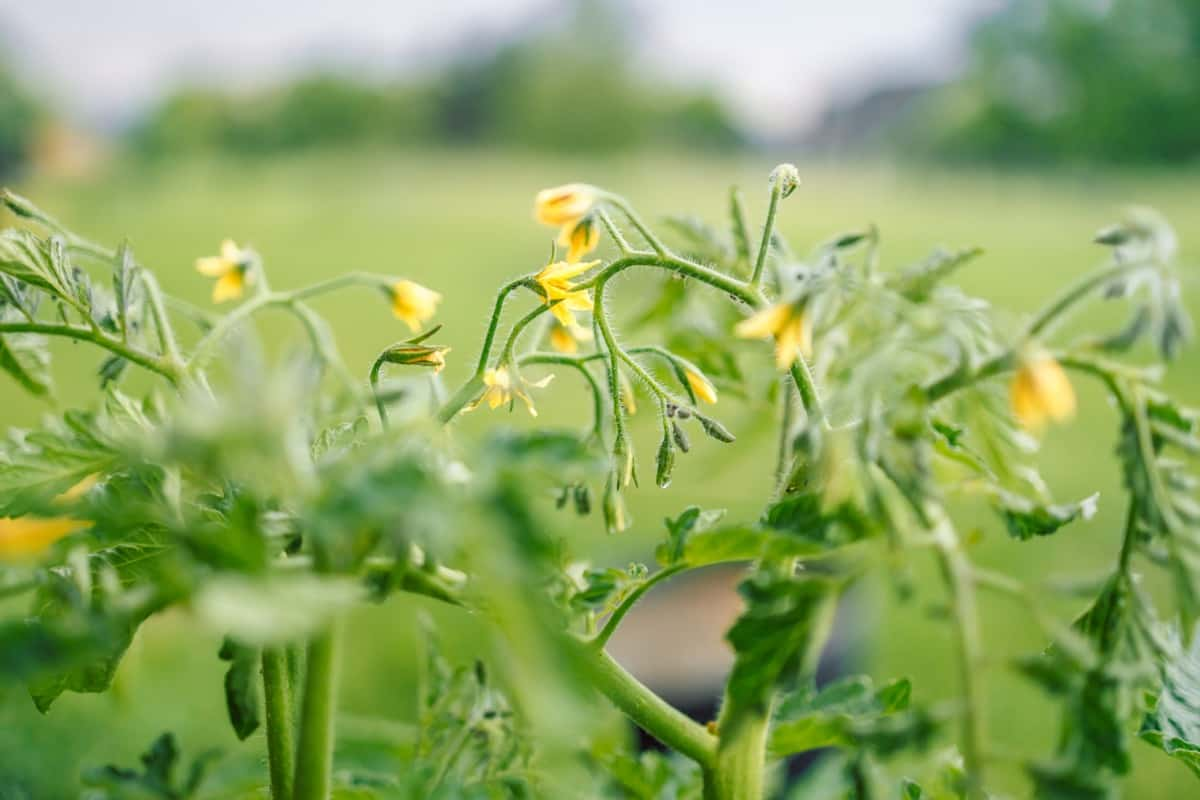
Understanding the genetic factors influencing the Tomato plant fruit set can help gardeners choose appropriate varieties for their specific growing conditions and goals. By selecting cultivars with favorable traits and providing optimal care, you’ll increase your chances of enjoying a bountiful crop of delicious Tomatoes.
Tips and Solutions for Encouraging Fruit Production in Tomato Plants
How to encourage Tomato plant fruiting? Make sure your Tomatoes are receiving adequate sunlight. Tomatoes require 6-8 hours of direct sunlight daily to thrive and produce fruit. If they’re not getting enough sun, consider moving them to a sunnier spot or providing additional artificial light. Proper watering is also crucial for fruit development. Tomatoes require consistent moisture, so water them deeply and regularly. Feeding your Tomato plants with the right nutrients is essential too.
Use a balanced fertilizer high in phosphorus (the middle number on the package) to promote flower formation and fruit set. Be cautious not to use excessive nitrogen fertilizers, which can result in lush foliage but minimal fruits. Pruning plays an essential role in encouraging fruit production as well. Remove any suckers between the main stem and branches as they divert energy away from fruiting. Additionally, prune overcrowded branches for better air circulation, which helps prevent diseases that may harm fruit production.
Another important factor is proper pollination. Gently shaking the plant or using a small brush to transfer pollen between flowers can help ensure successful pollination when natural pollinators are scarce. Be vigilant against pests and diseases that might hinder fruit development. Look for common causes like aphids, whiteflies, or fungal infections such as powdery mildew; take appropriate measures promptly if any issues arise.
In case you missed it: How to Control Pests and Diseases in Tomato Crop: Causes, Symptoms, Chemical, and Biological Management
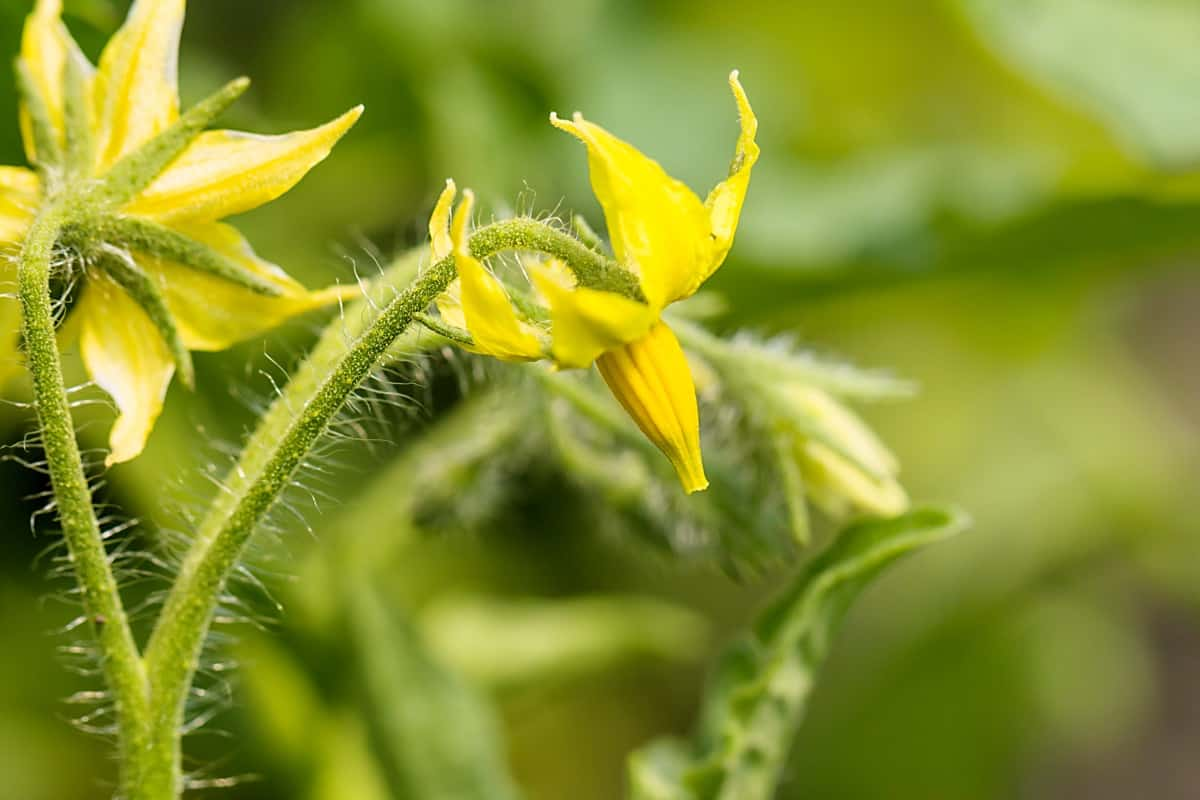
Conclusion
Tomato plant flowers but no setting fruit can be a frustrating problem for gardeners. However, understanding the various factors affecting fruit set in Tomato plants is key to finding solutions and encouraging successful fruit production. From lack of pollination to extreme temperatures, nutrient deficiencies, pests and diseases, improper pruning techniques, hormonal imbalances, genetic factors, and more – there are numerous reasons why your Tomato plants flower but no fruit. The good news is that there are several tips for increasing fruiting in your Tomato plants.
- Gardening Techniques in Planting Vegetables
- Where to Place Indoor Plants in Your Home
- How to Grow Tomatoes Organically at Home: A Comprehensive Guide
- Organic Gardening on a Budget: Low-Cost Methods and Materials
- Gongura Seed Germination and Planting Methods
- Cabbage Seed Germination and Selection
- Broccoli Seed Germination and Selection
- Asparagus Seed Germination and Variety Selection
- Seasonal Flower Gardening: Best Practices for Spring, Summer, Fall, and Winter
- How to Grow Hibiscus from Flower
- Plantation Ideas for Home Decoration: A Beginners Guide
- Flower Garden Designs and Layouts for Beginners
- Planting and Spacing Techniques in Papaya: A Beginner’s Guide
- Growing Gold: Essential Techniques for Planting Pineapples
- How to Make Kalanchoe Plant Bushy: Home Remedies and Solutions
- 11 Reasons Why Your Gardenia is Not Blooming: Home Remedies and Solutions
- Eco Elegance: The Guide to Designing a Drought-Tolerant Landscape
- Gardening on a Slope: Strategies for Hillside Landscaping
- Nourish and Flourish: Top Organic Mulches for Thriving House Plants
- Everything You Want to Know about Indian Mogra Flower: Discover Uses and Growing
- Green Thumb Success: Expert Tips for Cultivating Greenhouse Pumpkins All Year Round
- Maximize Growth & Flavor: The Ultimate Guide to Companion Planting in Herb Gardens
- How to Control Rhododendron Problems Naturally: Home Remedies and Organic Ways to Fix Them
- Natural Magic: The Remarkable Benefits of Cinnamon for Plants
- Best Steps to Revive Dying Tulip with Natural and Organic Treatment
- 10 Reasons Why Your Angel Trumpet is Not Blooming: Remedies and Treatment
- How to Fix Periwinkle Leaf and Flower-Related Problems: Natural Remedies and Solutions
- How to Fix Zinnias Leaf and Flower Problems: Discover Natural and Home Remedies
- Organic Steps to Induce Lemon Tree Flowers: A Comprehensive Guide
- Bloom Booster: Crafting the Perfect Homemade Bougainvillea Fertilizer
- Optimizing Growth: A Guide to Applying NPK Fertilizer for Potted Plants
- 10 Best Homemade Fertilizers for Rubber Plant: DIY Recipes and Application Method
- How to Boost Female Pumpkin Flowers: Effective Steps for More Flowers and High Yields
- Transform Your Indoor Garden: Top Benefits of Pink Salt for Houseplants
- 10 Best Homemade Fertilizers for Peacock Plants (Calathea): Easy DIY Guide
- Unlock Blooms: 9 Reasons Why Your Potted Chrysanthemum is Not Blooming